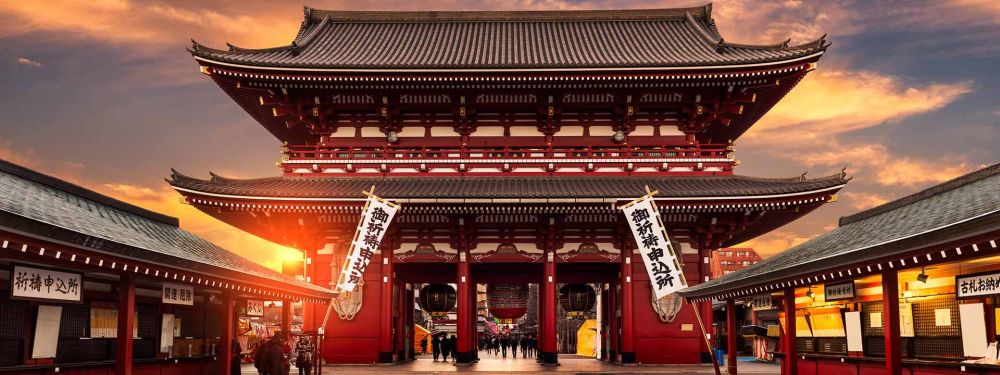

Sensoji Temple, also known as Asakusa Kannon Temple, is Tokyo's oldest and one of its most significant temples. The temple's origins date back to 628 AD, when two fishermen found a statue of Kannon, the goddess of mercy, in the nearby Sumida River. The temple was then constructed to honor the goddess by the brothers who found the statue, according to local legend. Sensoji was transformed from a spiritual centre into a pilgrimage site over the years, marking the early foundations of tourism for both locals and pilgrims across Japan.
In the Edo period (1603–1868), Tokyo, then known as Edo, became a thriving city and Sensoji Temple rose to prominence as a center for culture and commerce. The surrounding district of Asakusa developed into an entertainment hub, drawing more visitors to the temple precincts. The temple's Sanja Matsuri, one of Tokyo's most famous and lively festivals, became a significant attraction, with its roots believed to have begun in the late 7th century.
After much of Sensoji was destroyed during World War II, the temple was rebuilt with contributions from the public, symbolizing peace and rebirth for many Japanese. From the 1950s onwards, Japan's rapid economic growth saw a boom in domestic tourism, and Sensoji became a must-visit location for school trips, historical tours, and cultural enthusiasts. The post-war era also marked the beginning of international tourism to Japan, with Sensoji Temple firmly established on the Tokyo tourist trail.
Today, Sensoji remains a popular destination for both Japanese and international tourists. The iconic Kaminarimon ("Thunder Gate") and its giant red lantern, the historic Nakamise shopping street, and the temple's Hozomon Gate and main hall are highlights for visitors. Tourism trends have also seen the integration of digital experiences and the use of social media to share the beauty of Sensoji's traditional architecture and vibrant festival culture. As one of Tokyo's essential experiences, the temple connects visitors with Japan's past while remaining a dynamic part of the city's present.
Sensoji Temple has seen technological advancements play a role in enhancing the tourist experience. Multilingual guides, apps, and augmented reality features have been introduced to cater to the diverse needs of international visitors. The temple has also embraced modern trends such as the "omotenashi" (Japanese hospitality) movement that aims to provide exceptional service and a memorable experience for tourists. Amid global events such as the pandemic, Sensoji Temple has implemented measures to ensure safety, reflecting the resilience and adaptability of Japan's tourism sector.
Sensoji Temple's rich history and cultural significance have been central to its allure as a tourist destination. From its ancient roots to its current status as a symbol of Tokyo's cultural heritage, Sensoji has continuously evolved to meet the changing interests of those who travel from near and far to experience its timeless charm. As tourism patterns evolve, Sensoji stands as a steadfast reminder of Japan's enduring appeal and the profound role that tourism plays in the nation's narrative.